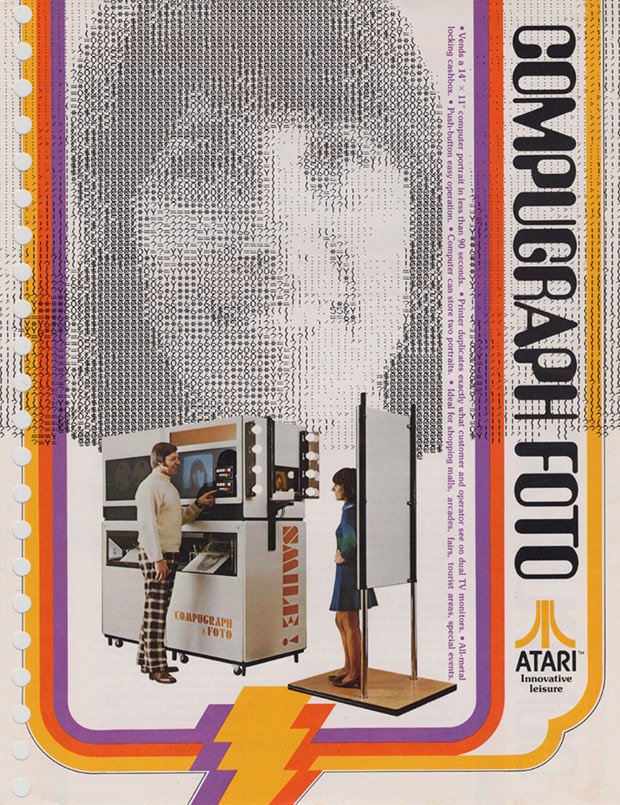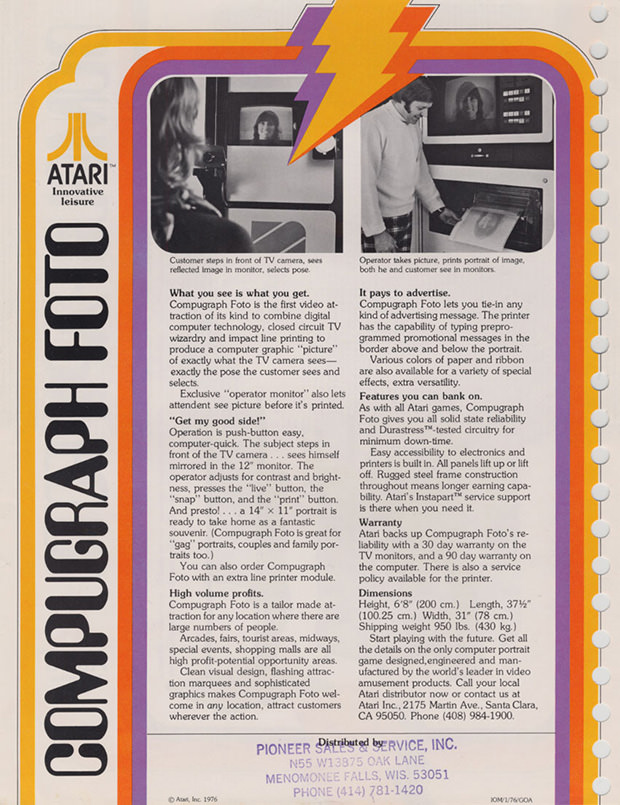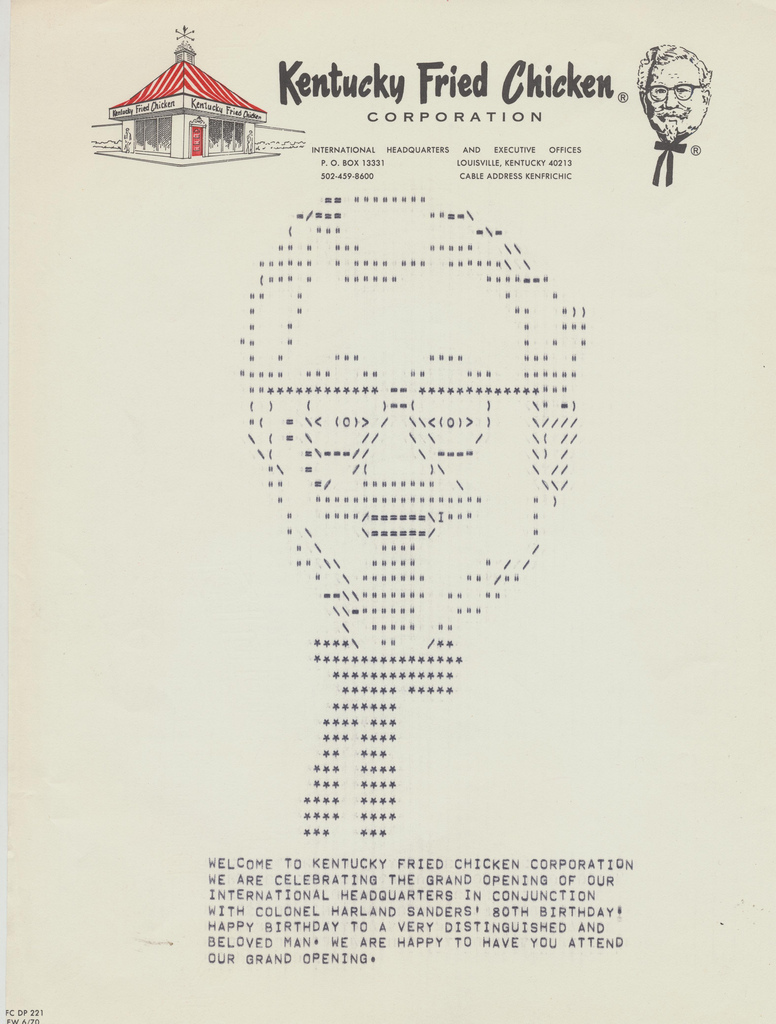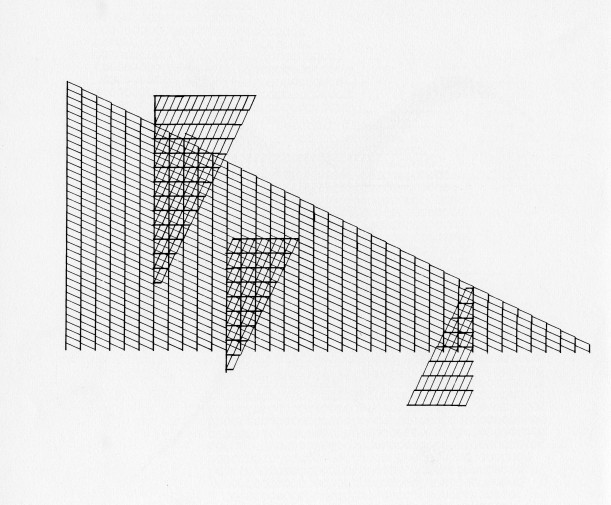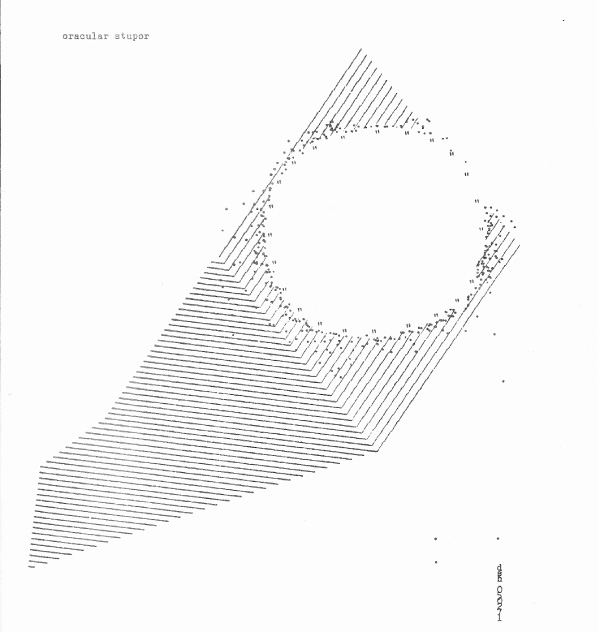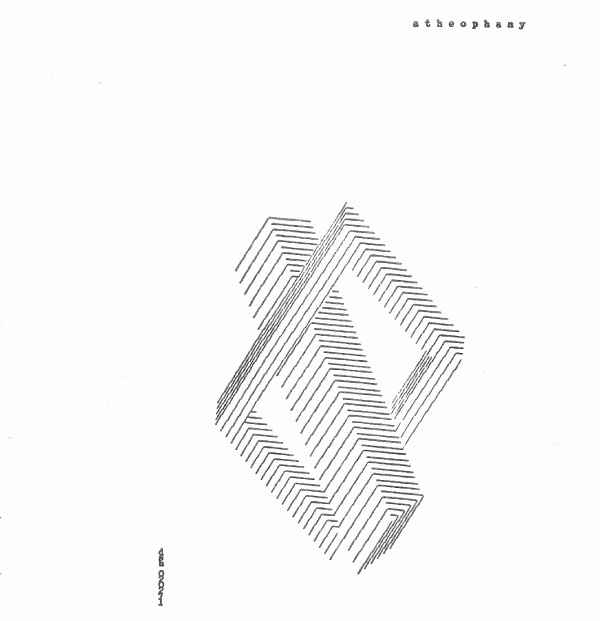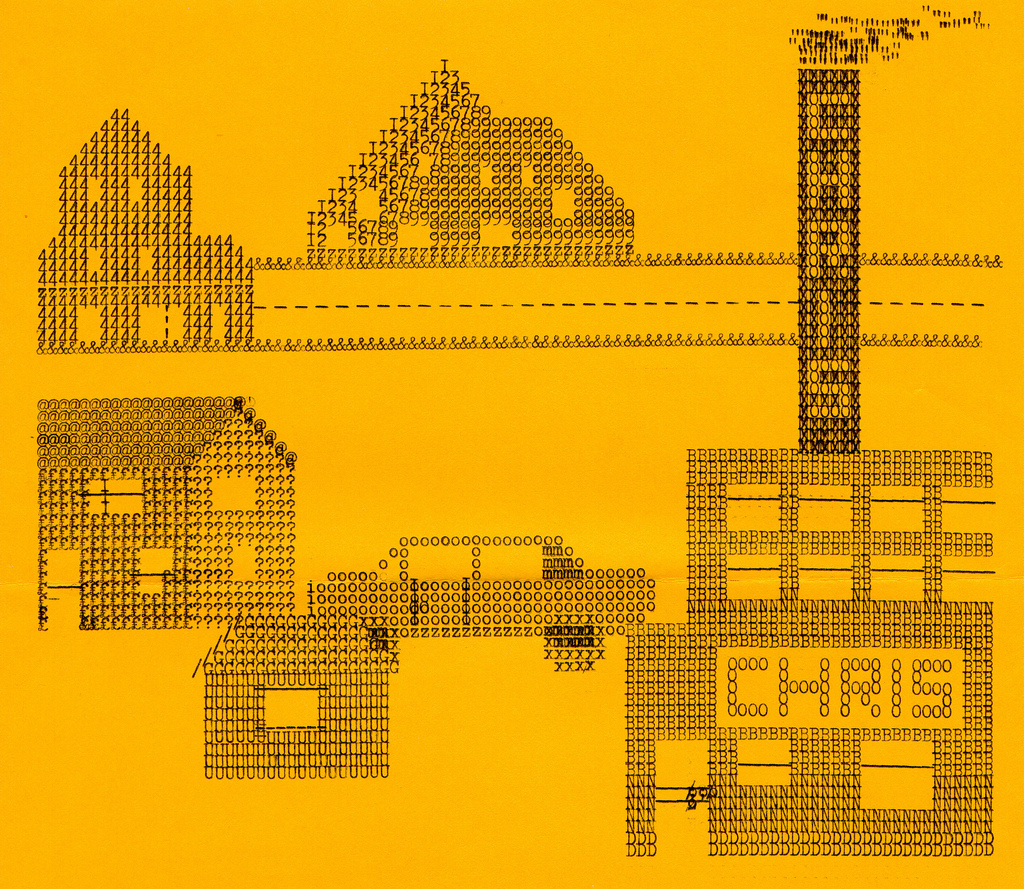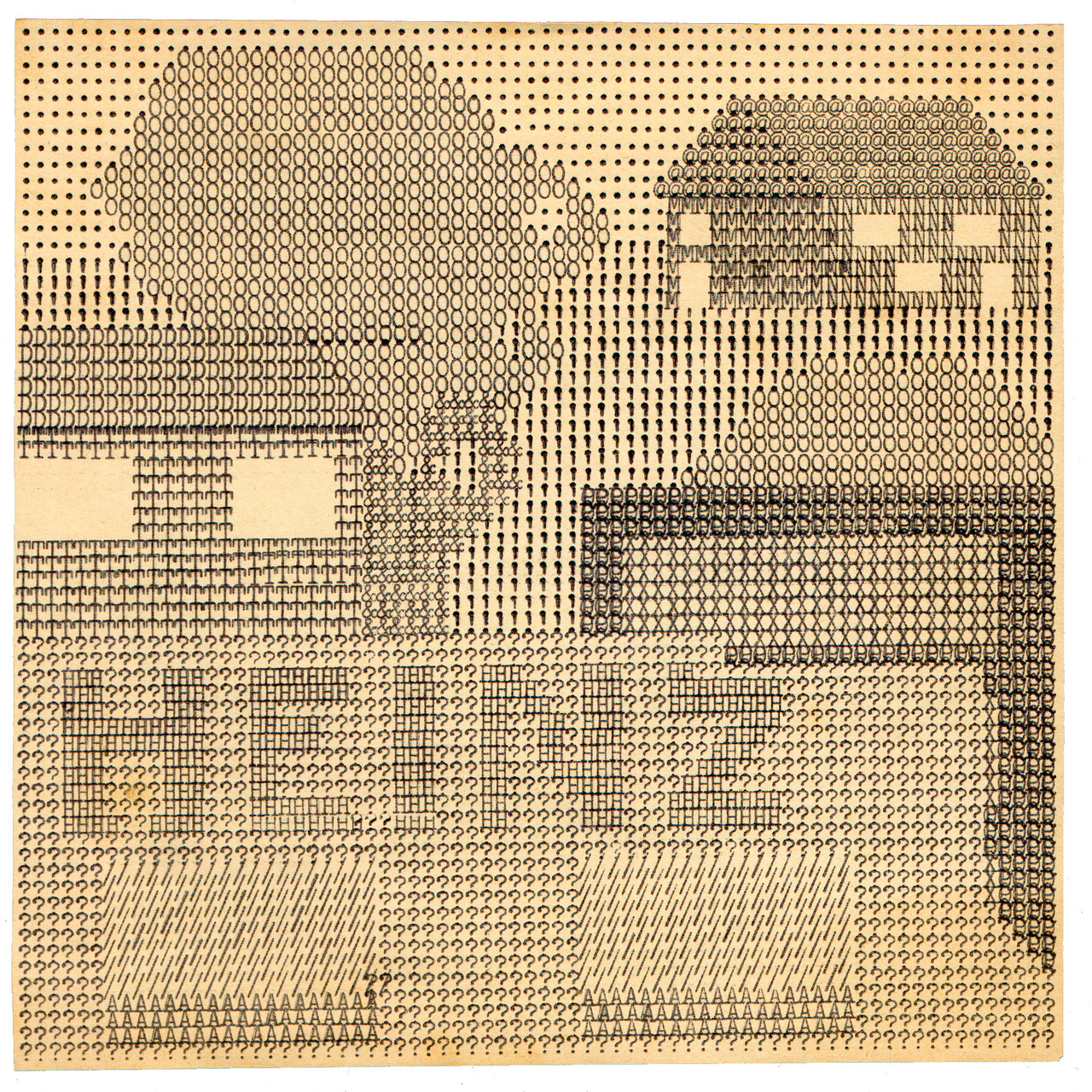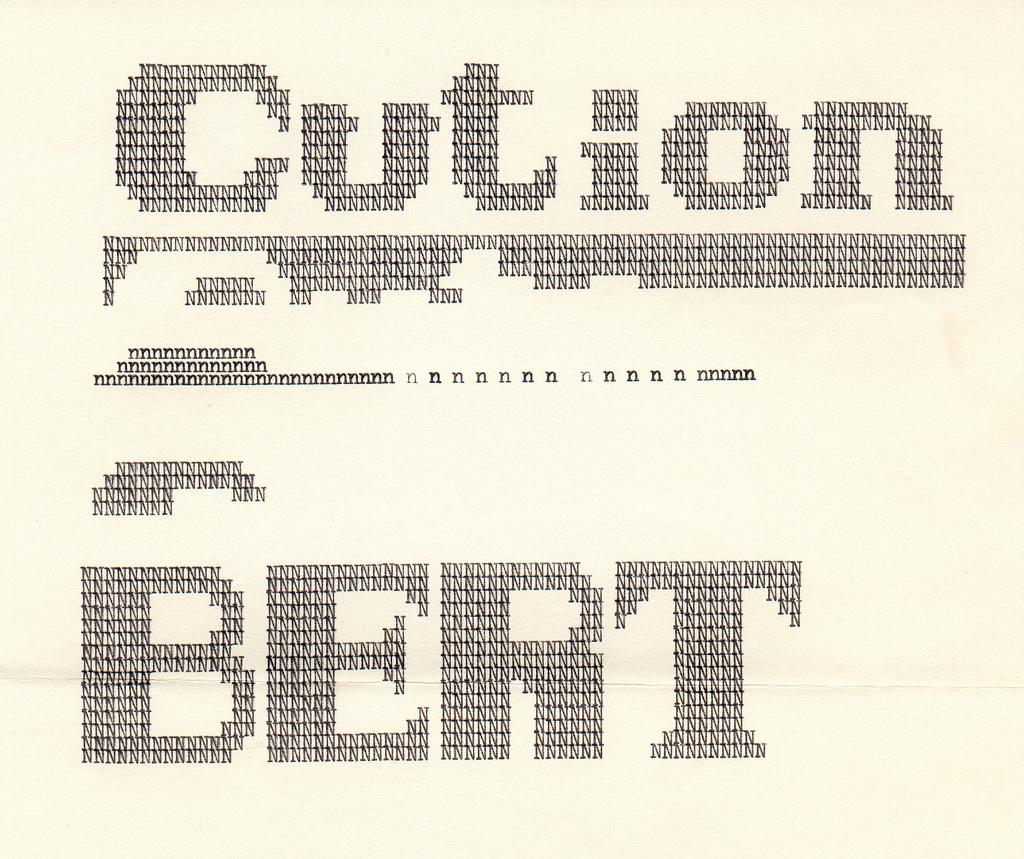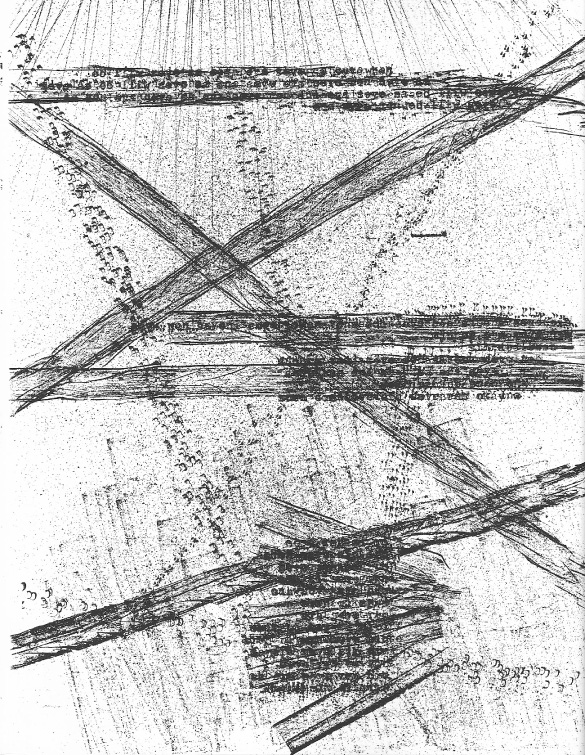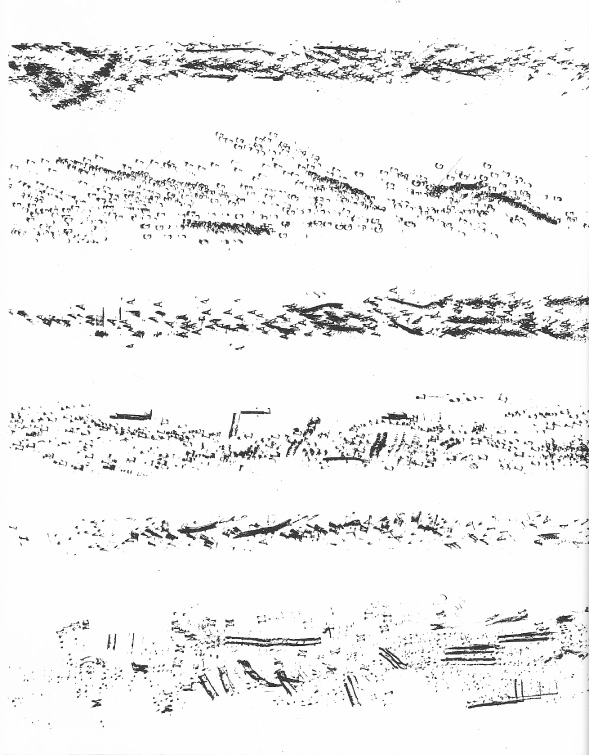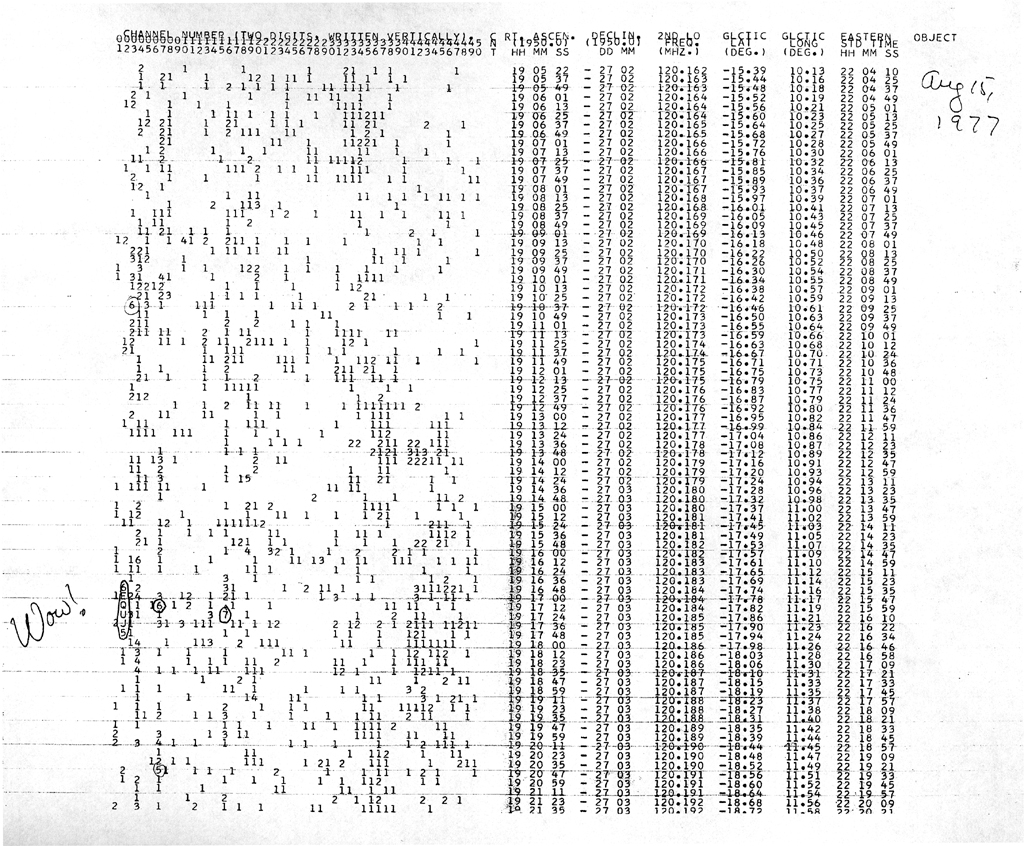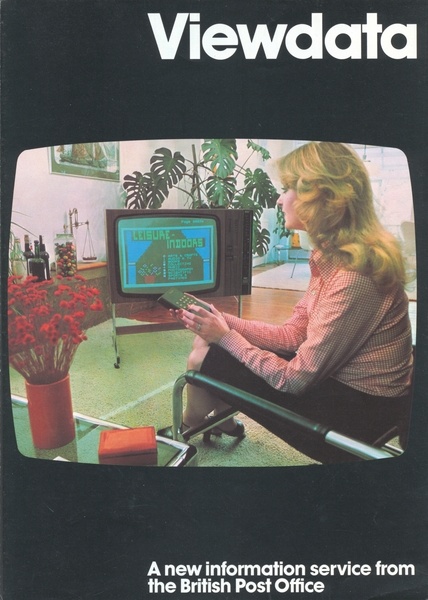Atari’s Compugraph (1976) – an ASCII photo booth. You have your picture taken and get a dot matrix print out (11×14 inches) after 90 seconds. A more recent approach to textmode photography is the Descriptive Camera, in case you missed it.
Tag Archives: 1970s
“Typewriter Art”, printed in 1975 and edited by Alan Riddell, features work by artists from over 20 countries, spanning from the early 20’s through the 50’s (and the coining of the term concrete poetry) to the tripped-out 70’s.
Grid 4 by Simon Parritt, 1975 or possibly 1971 (according to Igor Siddiqui in Slashed Interiors: Text/Space) or perhaps some other early 70’s year as suggested in Typewriter Art.
Ceolfrith No.15 by Dom Sylvester Houédard, 1972.
By Chris Hester “when I was a young man in the 70s, or possibly early 80s.” source
From The Plastic Typewriter book by Paul Dutton, 1993.
Although Paul Dutton finished this series of prints/smudges made from a disassembled plastic typewriter in 1977, this is the first publication of the entire work. It’s a lovely sequence of visual pieces: letters pressed on broken type, lines drawn in (presumably through typewriter ribbon), smudges, fragments of rock lyrics, ribbon rubbings, fingerprints, typed text, in short, a greatly enhanced set of textual elements. Given the replacement of the typewriter by the word processor, there’s a flavor of nostalgia, or perhaps metaphor (in the destruction of the typewriter) in this piece that may not have been originally considered.
Post updated in 2024.
The WOW marks the proof of aliens, and it’s spelled out 6EQUJ5!
SETI is the scientific method to find alien radio. It’s not an easy task, since you don’t know what you’re looking for. At all. So SETI includes some speculations. In this case, this hot text mode graph shows extremely loud occurences of the frequency 1420 MHz. That’s the frequency where hydrogen resonates, which is the most common element in the universe, so it should be the medium of choice for aliens. Fuck yeah science.
On a related note, The Arecibo message, which could also be textmode, was sent out only a few years before this discovery, in 1974. Just coincidence? The truth is out there, Scully, and it is in radio text mode.

From the book Like Contemplation… by Dom Sylvester Houédard, 1972.

